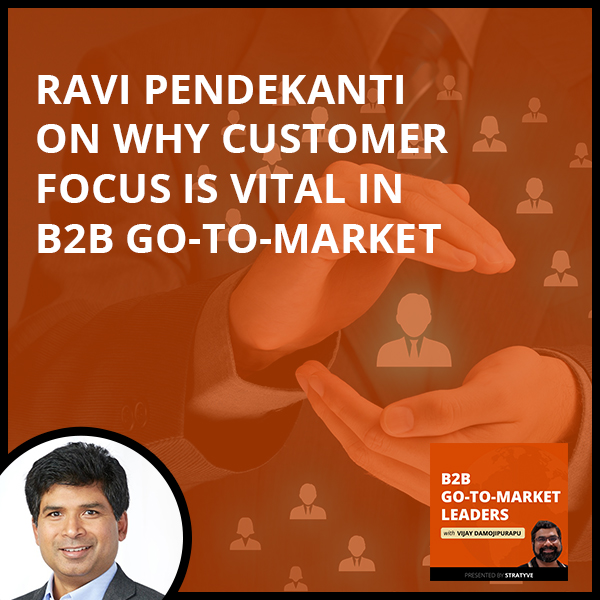
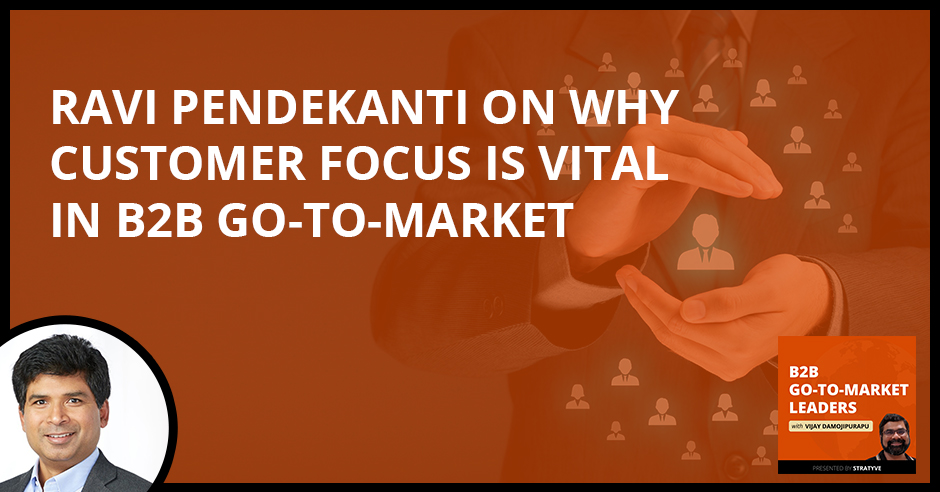
Maintaining customer focus should always be one of your top priorities in B2B. You must know the people you are serving to no matter what business you are in. In this episode, Vijay Damojipurapu is joined by Ravi Pendekanti, the SVP of Product Management and Marketing at Western Digital. Ravi shares how they achieved B2B success with customer-centric tactics focused on listening to the needs of the market. He also breaks down how businesses should craft customer-focused strategies and the amazing benefits of doing so. Plus, Ravi shares the exciting projects they’re working on at Western Digital and the role of big data in the upcoming years. Tune in for an insightful and informative discussion about managing and improving your go-to-market strategies!
—
Listen to the podcast here
Ravi Pendekanti On Why Customer Focus Is Vital In B2B Go-To-Markets
Welcome to yet another episode of the show. I’m excited to have Ravi Pendekanti, who is the SVP of Product Management and Marketing at Western Digital. Welcome to the show, Ravi. I’m excited to have you.
Thanks, Vijay. It’s great to be here.
I’m super excited. I’ve known you over the years, both on the professional side for a couple of years. Our careers overlapped at Juniper. More than that, I’ve known you as a person on a personal basis for many years. What stands out for me is as an educator on the professional side, you had a very awesome skyrocketing career, which I always look up to for inspiration, but at the same time, on the personal side, I enjoy your company, sense of humor, being yourself, and bringing everyone into the fold. I see based on what I’ve studied and researched on you, it’s the same qualities that you bring at work as well.
We do. You have to. Otherwise, you can’t enjoy your day-to-day life. The more we are who we are, the easier it becomes to go get our things done.
Let me start off with the signature question, which I always ask all my guests. How do you define go-to-market?
For me, go-to-market truly is four major pillars. You can’t do any go-to-market strategy, planning, or execution without addressing these four fundamental elements. 1) You have to understand the market. Understanding the market landscape is crucial, which means you need to know what’s going on in the market and who the competition is. 2) One has to do segmentation of the market. 3) You have to go out and get the right messaging. As a marketer myself, it’s never lost on me that without proper messaging, you probably are not going to reach your target audience.
Finally, you have to work on the right distribution strategy. How are you going to get your product to where it should be? Are you going to use the direct sales force or partner community to get there? Even if you look at the partner community, you are going to have resellers or go with their distribution staff. There’s a whole rhythm of other things that one has to work through, which becomes important. It’s those four elements that, for me, constitute a good go-to-market strategy/execution policy.
You covered the key aspects, which start from the first and foremost, which are the external deal and the market understanding. You talked about the segmentation and the classic STP, Targeting and Positioning, but you also added on the more important and critical piece. You’ve done the research, segmentation, positioning, and messaging. Now, how do you get that message out to the relevant audience and right segments at the right place? It’s end-to-end.
I completely agree. I’m obviously aligned on that, but let me put you and drill you into some more aspects. That’s an external view and then there’s an internal view within the company, which is top and foremost the alignment across product, marketing, and sales. Depending on the type of business, if you are SaaS, you’ll have support but customer success as well. How do you work on those elements? Once you’ve done the external study, how do you align internally?
The more we are who we are, the easier it becomes to go get our things done. Share on X
You do them in parallel. You cannot afford to look at the external elements without working on things that you need to align with the various functional organizations within your own company. You’ve got to run a parallel effort. The other way I also look at this is to do all this as much as we might think we are in the technology space. First and foremost, we are in the P2P business, which is a people-to-people business. None of this gets done if you don’t get people excited internally as well to believe in what you’re trying to do.
What that might mean is you have to go ahead and build your bridges with the engineering team so that the product can build in time, making sure that you’ve got the right feature functionality. You probably have to work with making sure that you’ve got all the sales elements in motion and the training elements to be looked at. There’s a whole rhythm of other things that one has to do.
As you do this, the benefit is not just making sure that everything is well-oiled machinery or becomes one, but more importantly, as you do this, people are going to be more open to leaning in and giving you ideas and suggestions so that this can is in the game now, which will help you get to market better and faster maybe too. I would encourage everyone to do that both the external things we talked about, whether it’s gathering the market data and competitive data, but not forgetting to do all the things you got to do as you’ve been called out internally in a parallel fashion.
That perspective is lost on a lot of marketers. Not just marketers, even for a lot of folks within the go-to-market functions across the board. Especially in the B2B world, it’s business-to-business, but a lot of folks, not intentionally, but it’s just that this one that they have a narrower perspective out of various reasons.
The part that you mentioned is lost. At the end of the day, even if it’s business-to-business, it’s still person-to-person. It doesn’t matter. Something that I’m seeing, especially the leading B2B organizations and B2B marketing teams are doing very well, the names that come to my mind are Drift and Gong. There are quite a few others that are doing extremely well and they have had unicorn valuations a lot more.
What they’re doing is they’re bringing in the B2C, business-to-consumer go-to-market motions, which is a deep understanding of the consumer and then delivering those messages. It’s almost shifting their mindset into, “Look at us or understand us because of who we are and more importantly, less of us, but it’s more of what you are and who you are.” It’s bringing that element. B2C elements into the B2B world, I’m seeing a lot of that being done.
It’s important for us to go and make sure that we do that too because some of the attributes of B2B play out at B2C. As we’ve already accentuated the point, at the end of the day, we are a people-to-people business. That means that you’ve got to go take care of that as well. We should only help you go meet some of the other elements of your goals as an organization.
I would love to drill into more aspects as we go along in this conversation. Shifting onto the lighter side of things, how do your kids view, tell, or describe what you do at work?

This is interesting because my dad, frankly, for a number of years, always thought I was a sales guy. In some ways, he still thinks I’m selling, though I keep telling him, “Dad, my job is not sales. My job is to try and understand where the market is headed and then try to come up with the right product ideas and then help create the right messaging and help our sales guys to do what they’re supposed to do, but not necessarily as a salesperson.” That’s always been a constant education to my own dad. He seems to understand, but then he falls back and says, “No, it’s more like a sales job,” but I’ll keep trying.
I’ll credit your dad, though. The main thing is he is right because we are in the business of selling. It doesn’t matter, but you are selling your ideas, your vision, and the direction that you want others to go to. You may not have the formal title of a salesman, but he is right.
It’s interesting you say that. In fact, his pet peeve is that each one of us is a salesperson and I would ask him, “Why do you say that?” He said, “Think about it.” I went, “Let’s say when my kids were young, they didn’t want to take their glass of milk in the morning or eat their veggies. I was selling to them and enticing them with something, whether it was an extra hour of TV time or getting them some candy.”
His no-hold emotion is, “You are a sales guy.” In fact, he would say, “All of us are selling. Whether it is trying to get your family to go out with you and they probably have other ideas, you’re selling.” He is a wise man. No wonder he was one of my mentors for sure and continues to be doing so, but in a way, we’re all selling every single day.
I can see your wife jumping up and down when you called out and told, “I incentive your kids with extra TV time and candies.” I’ve been impressed and inspired by your amazing career growth. Can you share with our readers and talk to us about your transition all the way from early days, but more importantly, the inflection points, how do you transition, who do you serve now, and what got you here now?
There are a couple of things. I still recall I started off my career as a hardcore engineer. As the saying goes, I had a choice given by my parents, “You could choose to be an engineer or a doctor. It’s fantastic set of choices.” Most people from the Indian subcontinent could relate to it and the choices would be those two typically. Of course, I would sign up and I said, “I’ll go be an engineer.”
I was a hardcore engineer for the first few years of my career, but then I realized that there was one situation that occurred wherein one of the companies I was working for happened to be Compuware. They had a customer who had an issue. At that point in time, the GM then decided to send me to go see if I could figure out what the issue was and fix it. That was my first interaction with a customer directly because I was in the back end all the time before that.
It turned out that I enjoyed the interaction with a customer because I was sitting down and trying to figure out what exactly transpired and what kind of data had been collected to try and understand what the issue was and then subsequently try and see how it can be fixed. During that process, I realized that I enjoyed what that interaction was. Due to the interaction, I also got to understand that there are some features that we didn’t have, which I took back to the engineering team and said, “Here are the things that need to be done and this is what I learned.”
If somebody else has learned and they can help propel your learning that much faster and further, why not leverage it? There's no reason to reinvent the wheel. Share on X
At that point in time, I recall the engineering guys telling me, “This is great feedback, but it’s not us you should give the feedback to. You should send it to product management.” I still recall I said, “Product management, what the heck was that?” I never knew the existence of a team called product management until that point in time. I spoke to the product management folks. The more I talked to them, the more I felt interested in this whole notion of an organization or this specialized group, which was helping define products and laying out the roadmaps.
It was that particular attraction that gave a sense of excitement in me to go on and venture out and try product management. That’s how I moved from being a hardcore engineer into product management. Since we already talked about my wife, at that point in time, my wife was not too sure if it was a step forward or backward. She is a hardcore engineer. We still have the debate and she normally always wins. As the saying goes, “Happy wife, happy life.”
The whole notion of product management for me has been an exciting journey from that point on. It then set me on a path where I felt just understanding the hardware side was not important and that I also needed to understand the software side. I started making shifts in my career all through to move into the software side and then started off on the silver side.
I moved to the software side of the house with systems management. I moved into networking. That’s where you and I met, if you recall, in Juniper Networks and then moved into storage. My whole journey has been about trying to learn and move to the adjacencies to help me understand and also give me that excitement of getting up every day and doing something which I completely have not had my fingers in before but gives me a chance to learn and grow.
When I look at your LinkedIn profile and background, you’re talking about big brands like Sun Microsystems, Silicon Graphics, Overland Storage, Juniper Networks, Oracle, Dell, and Western Digital. They’re all big brands and big names for sure. There’s always a playbook that has to be in play, which is, when folks are making their career transition, there is the technology side of things. You moved from hardware to expand your scope and moved on to the system side and the software side.
That’s more on the technology or technical side of things, but there are also the other aspects that are critical to one’s career growth, which are self-awareness, knowing the strengths and weaknesses, and bent to rely on others. There’s also the other element of looking up to mentors and the right folks who will “pull you at the right time.” These are all critical elements as well. Share with our readers the playbook along those lines as well.
For me, the inquisitiveness that one has to have has to be in the head. You got to go out and be inquisitive to learn and grow. That is something that each of us has to own, but then beyond that, it’s interesting you talk about mentors. It’s absolutely true. I have had some fantastic mentors in my life that I’ve always depended on to help me bounce ideas and give me thoughts and suggestions on what else I could do.
In fact, I’m scheduled to meet one of my mentors for many years, somebody by the name of John Shoemaker, who is the Chairman of Extreme Networks and who was a fantastic leader back in my days at Sun. He is somebody I still count on as a fantastic mentor who helps me bounce ideas and gives me the wisdom of all of his learnings too. As the saying goes, if somebody else has learned and they can help propel your learning that much faster and further, why not leverage it? There’s no reason to reinvent the wheel.
The best part of talking to the mentors is also that when they share some of the lessons they’ve learned and the mistakes they’ve made, I don’t have to make the same set of mistakes. I’m bound to make new ones and I’m okay with that. We have to be aware that we’ll always make mistakes. You will inherently have to go back and probably will fall, but you’ll have to learn to get up and move on. That’s the power of the mentors.
There’s something else that is not typically well-articulated and talked about, but I also think it’s important to have sponsors in your life. Sponsors are people who will be ready to also pitch for you when you’re not allowed. Something else that I’ve learned that’s crucial is to also have some sponsors in life who will be big believers in you, not just to give you advice but also to talk on your behalf and position you for maybe the right opportunity or the right role. That’s something else I would encourage everyone to think about.

I’m switching gears a bit. Talking about your role, you lead product management and product marketing with a fairly large-sized business. You mentioned it’s $9 billion-plus and then you also talked about the team size, which is 100-plus people in that organization of yours. Talk to us about who you serve. When I say who you serve, I’m talking about your customers, partners, teams, peers, and executives. More importantly, how do you prioritize and ensure that all the stakeholders are aligned?
There are multiple facets to your question. Let me try and unpack it one at a time. For the fundamental question of who do I serve, the answer always has to be for each of us is customers. There’s no other way of looking at it because, ultimately, whether you are a business that’s a few million dollars in the making to multi-billion dollars in the making, you are out there to go ahead and serve your customers and help solve some of their business problems, which is where you come in with a solution.
That’s never lost on me that it is our customers that we have to serve. All through across my journey for decades, that has been a fundamental building block for everything that I’ve aspired to do is to sit down and show that we address the customer issues and problems, wherein you have with your big ears, listening to what could be the challenges that the customers are going through. With that said, once you have that covered, then you have to go rework whatever needs to be done internally to address that.
I partner with our city organization, engineering organization, sales organization, and the support organization to ensure that we have what it takes to go out and provide the necessary product resolution for our customers. They become my partners in crime per se to enable us to get to where we should be. Those are the mechanics that I go through along with the team of my colleagues, who are all propelled by the same set of ideas and cause to make sure that we meet those objectives that we are setting out to.
That’s one piece of it, but then there are the adjacencies that I don’t want to forget. This is where you have to work with other partner organizations. This is where I look at organizations that probably provide our PCBs and SoCs. There are a whole plethora of things. We depend on the ecosystem of partners and that cannot be lost out as well. If you extend on the whole distribution stuff I talked about, you have your resellers and channel partners and others.
There are partners that you bring into the fold to help you build the right product/solution and then there’s the other piece. We talked about the fourth leg of the go-to-market, which is the whole channel to go help in the distribution of the end product. That’s something else too that needs to be done and who are part and parcel of the whole planning and execution process for the whole product introduction.
I completely and holistically agree with you because I’ve been fortunate enough to speak with founders, investors, and go-to-market leaders across the spectrum. Small, large, or mid-sized businesses, it doesn’t matter, but the common thread that connects all of them is the customer outcome focus, first and foremost.
If you talk about the early days of a company, if you speak with the founder, it’s the primary research, the customer discovery and the lean startup model, which is all about going and studying the problems and then coming back and testing out the different hypotheses around the solution, how you position and package the pricing, and then your go-to-market aspects as well.
The same applies even to a more mature and larger organization. It doesn’t matter if you’re a $50,000, $100,000, $100 million, $1 billion, or even $10 billion or $50 billion. It’s the same principle and mantra, which is customer outcome focus. That’s great to know. It’s good reinforcement. For all the readers, if you’re not spending your time on customer outcome focus, please do that. That’s the primary focus.
I get that part. You’re leading an organization. You’re clearly out there studying the market, but how do you reinforce to your team across product management and product marketing that whole customer outcome focus? Do you encourage or do you have any programs around, “Go out there. Do your primary research and secondary research?” How do you build those muscles in your organization?
Whoever said life is only about ups, they have plenty of downs to deal with. Share on X
Across my times in various organizations, one of the things that’s something that I’ve learned quite a bit is I use the word big ears to keep listening. You listen to what is being said and then you bring that back into what it means. There’s a distinction between what is being said and what it means because they’re not probably all the same at the same time, not because of anything else but each of the customers, if you think about it, are looking through a different lens.
For example, if you talk to a financial organization, they’re looking at how do they make the financial transactions safe and secure. They’re not thinking about the various elements in the backend technology as to how that happens. That’s our job. They might be focused on one element and be speaking to something, but then it’s our job to build a bridge between how they’re trying to look at the issue and the challenge and bring it back home as to how we can build the resolution of the right product to help enable that.
With that, it’s important that we get those inputs from various forums. The reason I say that is you probably are well-off by sending a survey. It has a set of questions with choices to make or you get a very high-level of rudimentary view, but that is not sufficient, but it gets you started. We also do what we call blind studies wherein they don’t know who is asking for this study because, at times, who is asking for that study can also skew the responses.
We have done the practice of doing blind studies, so they don’t know which organization is asking for this and then they’re more apt at giving you some candid feedback. As much as we all ask for feedback, usually, human beings don’t like to give you negative feedback, but if it is masked with some level of not knowing who that is, they’re more open to giving feedback. That’s the nature of the beast and how we work through it. Those blind studies are something else we have used to go get some more double-click, getting people in the room and having them talk through it. You get a little more depth in that.
The other thing we have done very successfully is we spend hours and days with some of the customers to ensure that we can unpack a lot of things that can’t be done by a round table conversation or survey. My point being is that you have to use multiple tools in your tool bag to go ahead, try, and make sure that you truly understand what it is that you have to solve for. This becomes more important when the time-to-market is becoming crucial and needs are shrinking.
When I started, there would be a time when you need to get a new product or a feature, it could take you two years, but now, some of the product’s spins that we got to do is probably coming down into multiple quarters. When there’s time-to-market pressure, our TCO pressure is coming in because the customers do care about the total cost of ownership.
Let’s say, if I take a server, it’s just not about, “What kind of processing capability it has?” There are other things too that goes behind it, “What is the power consumption? Does it need more cooling? Are we able to do a better analysis from a remote location without having somebody go in there in case there are any issues?”
That’s how companies are beginning to have more finite and granular TCO measurement tools, which have evolved over the period of time. You got to think through all those different elements to make sure that we are not just asking the customers, but we are able to unpack what it is they’re saying and bring it back to our roadmap design.
You mentioned quite a few things over there. It comes down to using the different tools and mechanisms for understanding your customers for customer outcomes. That’s a key message. Let’s shift gears a bit. I do want to come back into how you’re looking into 2021 and 2022 goals, but before that, as you and I know, there’s no need to reinvent the wheel. Others can learn from someone else when they make mistakes, our success story. In that spirit, can you share a go-to-market success story either from your days at Western Digital or from a previous one?
In terms of a good success story, I would take the example of at least my time at Dell. One of the things I still recall at that point in time when I joined the company, the company was shipping servers for over two decades, but we were never number one. We had the task and we took the goal upon to go out and see how we could change that to become the number one server provider in the industry.
As a team, we bonded together. I was very proud of my team for how we came down to relooking at the roadmap, looking at where the market was headed, and listening to what the customers needed, whether it was about systems management or was it important for GPUs as the advent of AI machine learning became important?

The questions of whether it is 1 or 2 GPUs they need, working with the right partners to ensure that we have the right technology brought in, and working with the CPU vendors that were out there looking at, “Where could this market be trending? Do we expect this to move ahead and continue to grow? Were there going to be adjacent markets that were going to take growth? Was there edge computing coming into play?” Those were the kinds of things that we looked back and said, “Here is what makes sense.”
We try to lay all the data we had completely, and I deliberately use the word data because you have to be data-driven. You can’t be emotionally attached to ideas and concepts. I brought the whole concept of customer-centric innovation. We’re looking at it from the lens of the customer, making sure that we’re able to go back in and plan a portfolio, and looking at the various elements that I mentioned to have the most robust roadmap in the industry and with the highest quality. We’re working with our colleagues in engineering and making sure that we’re able to bring the right products to the partner ecosystem, as I talked about.
When that came through, it did make a difference because we weren’t listening to our customers as they said here into our ecosystem partners. It helped us go back and take the number one slot or should I say if we had the opportunity to go back, relook at this stuff, and build the right portfolio, get to number one. It does help when we as a team sit down and do what we need to do in terms of listening, collecting the data, making the right calls and the roadmap, and working with our partners because this is a team sport.
It comes back to the customer outcome focus, which you and I talked about. You built that muscle at Dell and you had big numbers. If I got the numbers right, during your time there, you were part of the success story where you grew the server and the related business from $11 billion to $19 billion. Those are big numbers. It’s a testament to building that muscle around customer outcome focus. On the flip side, can you share a go-to-market failure story? I’m sure there will be plenty. It’s about picking out the most relevant for now in our conversation.
Whoever said life is only about ups, they have plenty of downs to deal with. This is in a subtle way, but it means there are ups and downs. One of the examples I could talk about is during my days at Sun Microsystems. If you recall, this is a company that gave the world Java. It gave the world some of the best possible workstations based on Unix. It was a company that could never do wrong.
I’m very proud of my association with Sun, though talking about some of the lessons learned and things that we could have done better, there are a few things. Number one, this was when Linux was still in its infancy. We had an operating system called Solaris, which our customers loved, especially the financial industry and the telco space. When you think about it in this particular market, it was all about having the most trustworthy hardware that was based on SPARC, that was our processor, and the operating system in the form of Solaris.
What we did not do was to not lead the trends moving towards open source. We could have easily gone ahead of them and looked at an OpenSolaris model where Linux would have then taken off, or on the flip side, installed SPARC used, let’s say an x86 platform, or we could have done OpenSolaris. My point being is that we continued to believe in a proprietary stack rather than moving towards an OpenStack.
Why this is relevant even now is, if we look at the industry, look at the number of things that depend on an OpenStack portfolio. We were at the forefront. We should have and could have, but we did not. That’s at least one man’s opinion as to how I think we should have learned. Likewise, where we have Java, I don’t necessarily think we monetized this as much as we should.
There’s progress in going to open source, but then the monetization.
It’s a nice way of looking at the entire portfolio but also looking at the trends. Make sure that you have an ear on the ground, always looking to and getting the polls from the market so that we can go ahead and do what is right for not just the customers but for ourselves too. That’s probably some good lessons learned.
Coming back to the question where I put up, which is, how are you looking at your 2021? Now that we are in Q4 of 2021, let’s talk about the 2022 goals. Not to share any confidential information, but broadly, how are you looking at 2022 goals for you and your team in Western Digital? More importantly, how are you thinking about the execution pieces if you can share that?
Customer focus is making sure that we learn from what's going on in the industry. Share on X
There are a couple of things when I look at where we’re headed. Customer focus is making sure that we learn from what’s going on in the industry. It’s not lost on us that the amount of data being stored continues to grow. It is said that each one of us is probably storing 2 to 2.5 times more data this year than last year and you’re going to do it next year. My point is, that’s happening in our personal lives, which is why you probably have smartphones now with more memory than you ever had in the past because it’s pictures, videos, and whatnot.
If you look at the fact that most organizations now want to do more analytics on how the customers are buying or interacting with them, that means they need more data to be collected and analyzed. People talk about AI machine learning. Machine learning or deep learning, what is it based on? It’s based on data. Deep learning means you’re going to go back and analyze a lot more data than what you would do as it gives you money.
My point is, if you look at any of these trends, IoT or edge computing where there’s more data, it’s said that 75% of the data approximately is going to be generated outside of the data center, which means that there’s more data being created. For us, it means we got to provide our customers with more ways and better technologies to store the data. The way I look at this in every way I see it, data is going to be created more in the next few years than the last couple of decades.
What that means is we, as Western Digital, have to provide the right mechanisms to store the data, which is where we have a unique proposition unlike anybody else in the industry where we have the best of both flash and hard drives, which gives us the unique opportunity to be the first choice for any of our customers looking at storing data for their own business purposes.
Having said that, we at Western Digital are focused on making sure that we provide the right set of choices for our customers. Look at the hard drives. We’ve got everything from 1-terabyte hard drives all the way to 20-terabyte drives. We’ll continue to grow it because, when more data is needed, you got to go provide better technologies that our customers can depend on and we’re going to focus.
It’s interesting you asked because we introduced something called OptiNAND. OptiNAND Technology focuses on three things. It’s helping grow the capacity, performance, and reliability of our drives. We do that by vertically integrating both our flash technology with our hard drives. That’s the best part of what we’re trying to do and we’ve got to continue to do that. You’ll see all are coming to traction of some of the cool products we’re going to introduce.
It’s an exciting time, especially if you’re in the world of compute, storage, or networking. For consumers and a lot of folks outside, they may not see it, but everything that’s driving and facilitating these experiences that they use both at the business side as well as on the personal side, we’re taking a photo and storing it, making those conversations, or using your favorite communication tool. It comes down to these three, compute, storage, and networking. You said it right. Storage is critical. You can have the compute and networking, but at the end of the day, it’s still storage. You got to start somewhere. I’m excited by what’s in store with the big picture and the vision. If you narrow down your focus to 2022, what do you see are the barriers for executing against that big picture vision?
Honestly, we are dealing with some of the component shortages. It’s not just in our industry. It’s across various industries. I’ve read an article about $230 billion worth of cars that have been affected the shipping issues that we have. They said they’re going to have the Los Angeles Port open 24/7. It’s those kinds of things that we didn’t foresee in the past that we have got to work through in ensuring that we have the right components and making sure that we’re able to move parts from Point A to Point B. Those are the things that are ways and challenges that we have to overcome.
As I said, it’s not unique to our own industry, but this is something that we across on a global scale see this for all kinds of organizations. That’s the thing that I pay attention to. There are some talented members that are working through these, making sure that we come up with unique and alternative ways of dealing with that. That’s something that I would be amiss if I didn’t say it’s something that we’re going to keep a close eye on because if I look at the opportunity to where the market is headed in terms of storage, it’s a huge opportunity. The regulatory needs in each of the countries that are asking for more data to be stored and stuff essentially drive more need for storage.
I was looking back and I still recall when I was starting off. I remember looking at a 75-megabyte hard drive and you got platters. It seems to be sitting in a washing machine with huge platters and you would plop them out. Now, on a 1-inch drive, you have the ability to store 10 to 20 terabytes. That’s fascinating by itself. The innovation and market need are there, but now, some of these other elements that I don’t think most industries saw earlier are upon us.
You could come up with the best messaging possible, but if you don't know where the market is headed, you may not come up with the right messaging for that particular situation. Share on X
I was talking to somebody who has been in the whole supply chain management for the last few decades. The person was talking about the fact that they had never seen this kind of supply chain challenge in their entire career. That’s something that we would obviously get out of it, but there are going to be a lot of learnings for everyone.
Supply chain issues are hitting different and various industries across the board. Especially in the hardware industry and hardware manufacturing setup where you’re relying on supply chains on the chips, memory modules, and different pieces being produced outside of the US, those have to come in. Those are big challenges that are going to take maybe a year or two for things to settle down or come back to “normal.” Those are things that are technically speaking outside your control, but talking about things that are more in your control. Looking at 2022, if you were to invest a 5, 6, or 7-figure budget or team, where would you put that focus or energy to?
The most important place is always making sure that we know where the market is headed. The focus will always be to understand the market. In anything else you do, you could come up with the best messaging possible, but if you don’t know where the market is headed, you may not come up with the right messaging for that particular situation. That’s what I would do.
My focus is making sure that we focus on where the market is headed. In this case, if I think about it, as we talk about data, more people store data. People are also looking at archiving the data. How do we come up with the right archiving methodologies so that it’s not just cost-efficient for our customers but also faster to retrieve? That is an exciting place and we call it cold storage, for example. Those are some of the things that are going to become very crucial for us.
To reiterate, are you saying that you’re going to put more time, money, or people into those areas, specifically the customer advisory board, which I’m sure you must be doing already? In addition to that, it’s about going back to the primary research and secondary research tools. That’s how you stay close to the different market trends.
It’s about, “How do you store more data? How do you make sure it’s secure and reliable?” You get it at a faster pace because you would have the data, but if you don’t get it back in a timely fashion, it’s no value. We want to be sure that we’ll be able to go build the right tools and technologies and we’ll be able to retrieve the data quickly too. Those are the kinds of things we want to answer and that’s where we’re going to focus on. That’s where the excitement is and that’s where we at WD are excited.
If you were to turn back the clock and go back to day one of your go-to-market journey, going back to your computer days, but then you transitioned from being an engineer into product management, what advice would you give to your younger self?
You don’t know a lot. I honestly don’t think I knew as much as I thought I knew. My point is it becomes fascinating and interesting when you look back and think that you knew exactly what the product is and what feature functionality should be brought out. I was pretty naive thinking that I had the answers. As you grow and mature, you realize there are so many facets to how you build a successful product and how you sustain it because the question is, it can be a flash in the pan.
You’ve got to sustain it for a period of time. There are lessons that I’ve learned and I continue to be a student for life. I’m sure there will be a lot of lessons to be learned. Don’t ever underestimate the needs of the market and think and become comfortable believing that you know everything there is to it because you simply won’t.
That’s what I call and refer to as being intellectually honest. That’s the first step and then you complement that and add on the curiosity element to it.
This is where I would say continue to stay humble.
On that note, thank you so much, Ravi. It has been a fun, great, and insightful conversation. Good luck to you and your team. We’ll cheer you from the sidelines.
Thank you, Vijay. I much appreciate it.
Important Links
- Western Digital
- Drift
- Gong
- Juniper Networks
- LinkedIn – Ravi Pendekanti
- Extreme Networks
- OpenStack
- OptiNAND
- Explained: How Apple can tackle the $230 billion luxury car market
About Ravi Pendekanti

Ravi is a seasoned executive in product management/marketing, developing a roadmap and driving GTM and sales enablement with a solutions view focused on customer outcomes while managing key partner relationships. Responsible to address a range of workloads including AI/ML, OLTP, HPC, Edge, IoT, Big Data and Analytics.
Areas of expertise include Servers, Storage, HCI, Networking, Systems Management, Virtualization and Cloud.
Focus is to win “Together” by building successful teams that work as a “Team” inside and across other functions in an organization and with applicable partners in the ecosystem.
Love the show? Subscribe, rate, review, and share! http://stratyve.com/

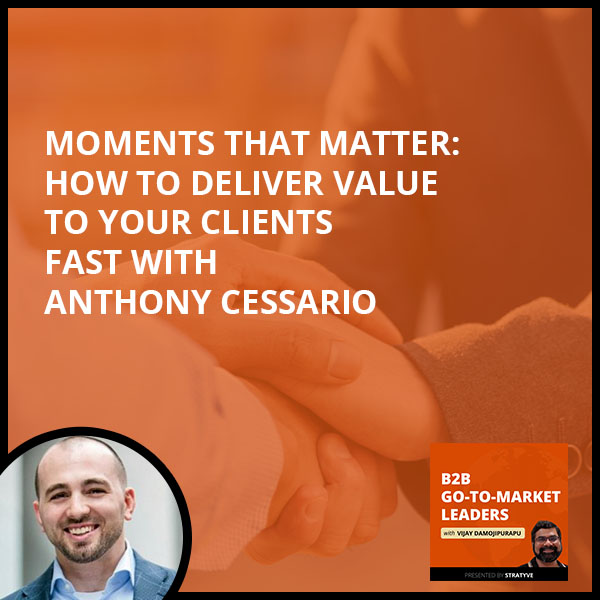
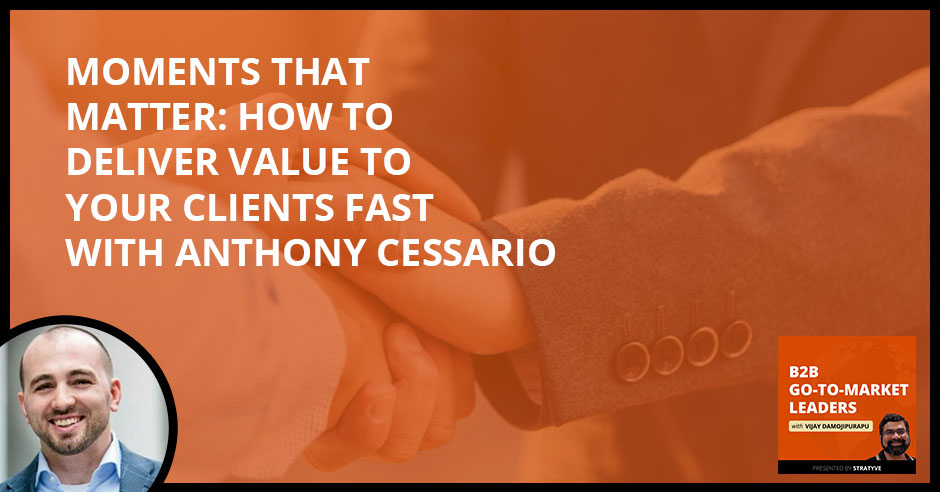




 There are 168 hours in a week. Here’s what mine looks like on a regular basis.
There are 168 hours in a week. Here’s what mine looks like on a regular basis.
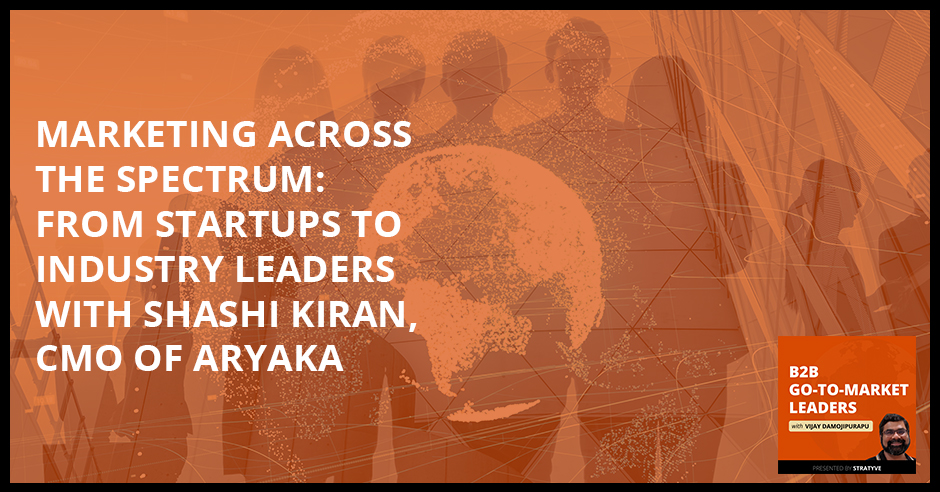



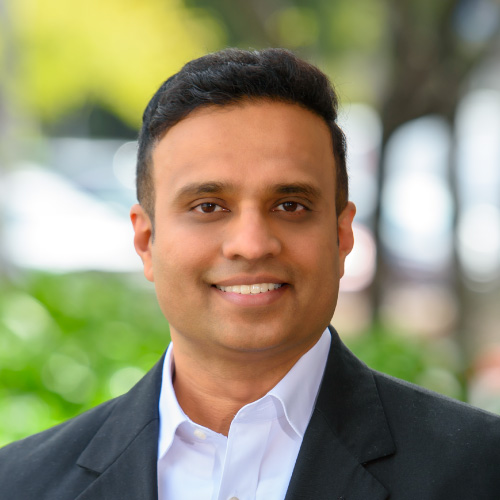 A proven executive with 20+ years of experience in business and technology roles. I adopt a growth mindset and enjoy driving outcomes that create impact, value and deliver a positive experience. Building trust-based relationships based on integrity, authenticity and avoiding politics are core to my personality. I’ve been involved in marketing, sales, business development and product management at large global companies and smaller startups. Love solutions and connecting the dots to win big! Meritocracy, passion and humility are key ingredients of my team-building formula.
A proven executive with 20+ years of experience in business and technology roles. I adopt a growth mindset and enjoy driving outcomes that create impact, value and deliver a positive experience. Building trust-based relationships based on integrity, authenticity and avoiding politics are core to my personality. I’ve been involved in marketing, sales, business development and product management at large global companies and smaller startups. Love solutions and connecting the dots to win big! Meritocracy, passion and humility are key ingredients of my team-building formula.